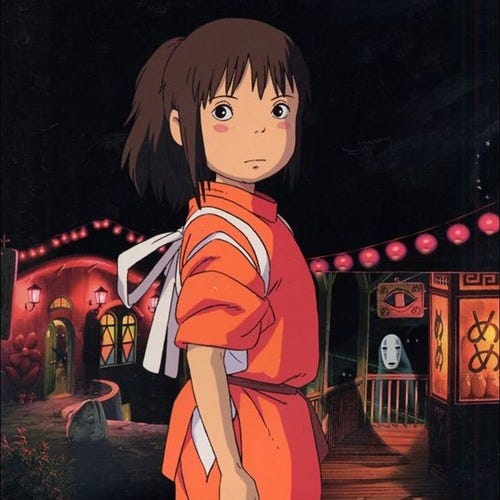One Summer’s Day
Difficulty Level: ⭐️⭐️
Song: One Summer’s Day
Composer: Joe Hisaishi
Genre: Anime/Instrumental
Movie: Spirited Away
Tuning: Standard (EADGBe)
Capo: None
BPM: 78
Personal Take
This is the second Studio Ghibli song that I’ve posted in my newsletter—the first one being “Merry Go Round of Life” from Howl’s Moving Castle. If you missed that article, check it out here!
If you’re new to Ghibli music, you might be surprised to learn that “One Summer’s Day” holds second place in streaming popularity, just behind “Merry-Go-Round of Life,” which is the top-streamed Ghibli soundtrack. These two masterpieces alone show just how deeply Joe Hisaishi’s music connects with listeners worldwide.
Joe Hisaishi’s “One Summer’s Day” is one of those pieces that immediately transports you to a different world. It beautifully captures the essence of Chihiro’s journey in Spirited Away—delicate, emotional, and filled with wonder. What I love most about this piece is how it balances simplicity with depth.
I was lucky enough to attend an orchestra concert featuring all of Studio Ghibli’s iconic music, and it was absolutely stunning. Listening to these pieces live was a completely different experience compared to through earphones. The way the instruments harmonized was mesmerizing. If you ever get the chance to attend such a concert, DON’T MISS IT!—it’s a magical experience you have to feel for yourself!
If you’re a beginner guitarist, DON’T WORRY! I’ve tried my best to make this arrangement as beginner-friendly as possible! With a bit of practice, you’ll find yourself playing it with ease! Let’s dive right in!
Melody
Let’s talk about some key parts of the melody:
1. Finger Positions:
Your left hand won’t stay in one place—you’ll need to move around the fretboard. Luckily, most of the notes are on the 1st string, with a few on the 2nd string and just exactly one on the 3rd string. You can follow my finger positions in the video, or experiment to find what works best for you!
2. Sliding:
You’ll notice there’s a line between the numbers (in red) on the tab—those indicate slides.
Sliding means you move your finger along the fretboard to reach the next note without lifting off the string, creating a smooth transition. Try plucking the note on the 6th fret, then slide your finger to the 8th fret while pressing down on the 1st string.
3. Triplets:
In the same image, you’ll see a small number 3 (in green), which indicates a triplet.
This means you play three notes in the time normally taken to play two, adding a flowing rhythm to the piece. Instead of splitting the fourth beat into two, “4 +”, now you split it into three, making it “4 + +”, but without changing the overall timing.
Accompaniment
The accompaniment for this piece is generally easy to play, but there are a couple of tricky spots you’ll need to focus on:
1. Bars 8-9:
Up until this point, your hand is mostly in the 1st to 3rd fret area. But for bar 8, you’ll need to move to the 5th and 6th fret. There’s no video for this, so I encourage you to experiment with different finger positions to find what works best for you.
Tip: I use my ring finger to press the notes on the 5th string, but feel free to try other fingerings.
2. Bars 9-10:
You’ll notice there are lots of 1s in the first half of bar 10, and the second half of bar 11, which means it’s time for a barre chord!
You can half-barre the 1st fret to make it easier to play. This is a great chance to practice your barre chord technique because you’ll only need to press half the strings (from the 1st to the 3rd or 4th string), so there’s less finger stretching required.
If you’re interested in more Studio Ghibli tracks, let me know in the comments! I’m always open to arranging more beautiful tunes that are beginner-friendly, so everyone can enjoy playing them, no matter where you are on your guitar journey.
PS: What’s the #1 thing that made you want to check out this newsletter? Reply and let me know, I READ EVERY REPLY!










